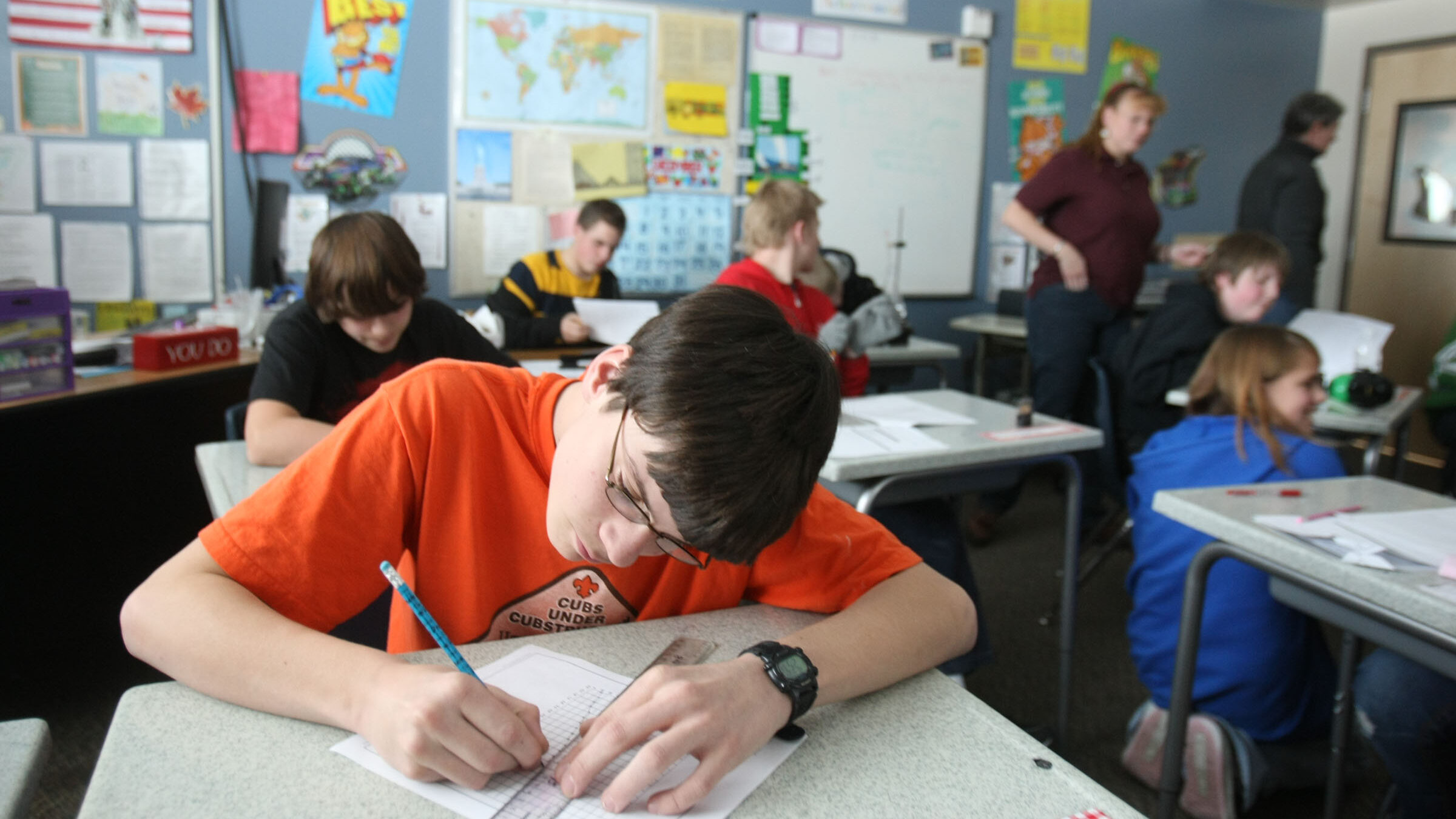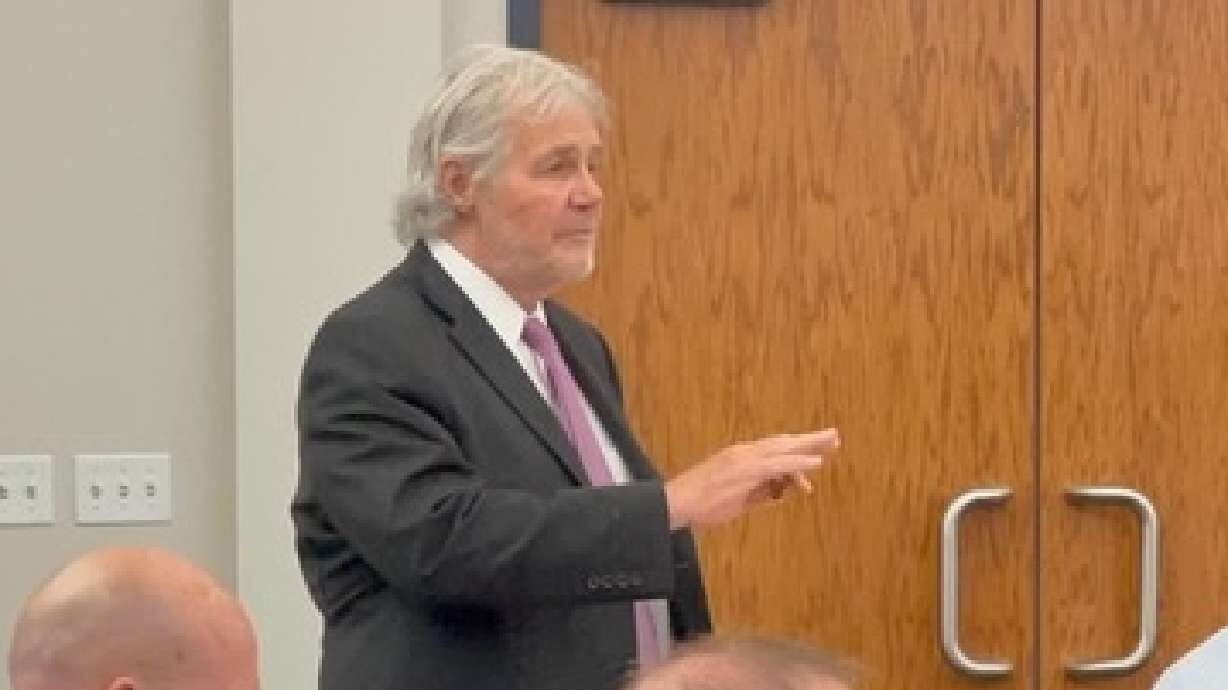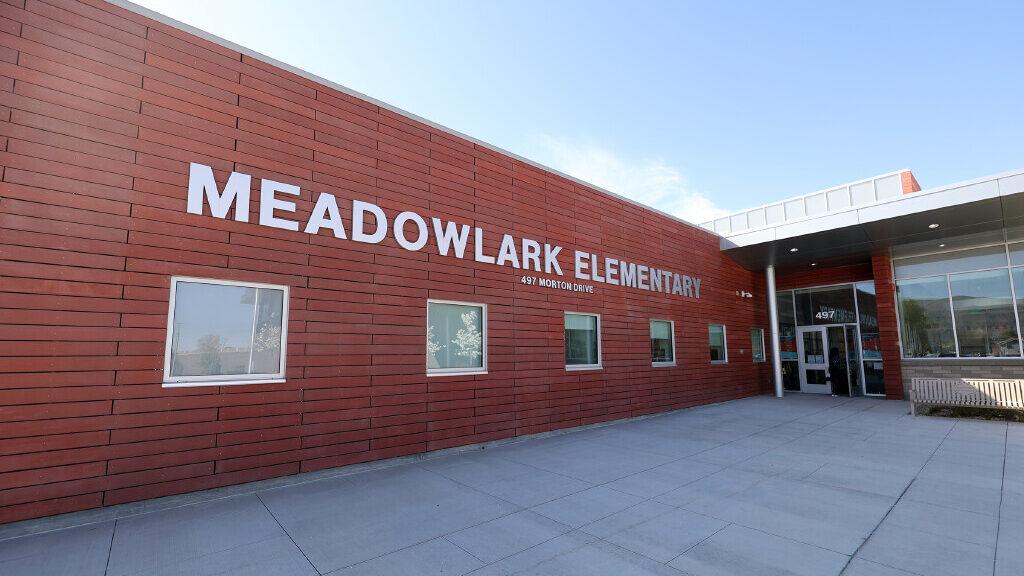Utah charter school responds to accusations of improper restraint
Sep 8, 2023, 6:44 PM

FILE: Andy Ellis and the other students in Brittany Ryan's 8th grade class, work on a science project at the Spectrum Academy in North Salt Lake. A federal report alleges that dozens of kids were over-restrained in past school years. (Keith Johnson, Deseret News)
(Keith Johnson, Deseret News)
NORTH SALT LAKE, Utah — A report from the U.S. Department of Education Office of Civil Rights found that Spectrum Academy, a Utah charter school for autistic children, may have over-restrained and secluded students. The report also claims the school failed to report all the incidents, and didn’t make up the students’ missed class time when they were restrained or secluded.
And this, the Education Department believes, violated the civil rights of some students.
But the school, Spectrum Academy, calls the report misleading. The academy’s Executive Director of Academics was asked directly by KSL NewsRadio if any students were being harmed.
“Absolutely not,” said Jaime Christensen who oversees academics for all five campuses from North Salt Lake to Pleasant Grove.
“We love our kids, they’re quirky and they’re great. But we do not harm our students,” she said.
The federal allegations against Spectrum Academy
The report found that the rights of two students were violated for three reasons. And that at least 26 students were subject to “a high number of restraints and seclusions during the review period.”
First, the report says that “Student A” was “restrained and/or secluded at least 40 times over a two-year period.” And that “Student B” was “restrained and/or secluded at least 99 times over a one-year period.”
According to the report, this happened in the 2017-2018 and 2018-2019 school years.
Second, the report alleges that the academy failed to reevaluate Student A and “may have failed to timely reevaluate Student B to determine if additional aids and services were appropriate” to reduce how often restraint and seclusion was used.
Third, the report states the school failed to make up the missed class time. This reportedly resulted in “14 hours of missed instruction,” for Student A and “at least 13 hours” for Student B.
The Spectrum Academy response
Christensen said the report lacks context and fails to note the nature of students with autism or who are neurodivergent. She said these students often require multiple attempts to restrain them.
“If it’s someone who exhibits self-injuring behavior and they’re banging their head against the wall, we may have to do that multiple times a day,” she said.
Utah law allows for “reasonable and necessary physical restraint” in schools when, “in self-defense” or “to protect a student [or someone else] from physical injury,” and allows school employees to “remove from a situation a student who is violent.”
Christensen explained that a common example of restraint is to hold a student’s arms or legs.
“If the student was in a seated position there may be one individual that may have to hold the ankles and one individual holding the arms. Usually, it’s just via the arms, ” she said.
She described seclusion as a “seclusionary time-out quiet room.” And sometimes, she said, students choose to use the room if have sensory issues.
“You put them in the room, multiple staff (members) are standing there, they’re never left alone. [The students are] in there and we coach them that as soon as you can calm down, the door is wide open and they have access to leave as soon as they can calm themselves down.”
Report cites hundreds of restraint examples involving dozens of student
The report said that there were 376 total incidents of restraint and seclusion involving 69 students in the 2017-18 school year. It said there were 692 total incidents of restraint and seclusion involving 109 students in the 2018-19 school year.
Christensen said that the high number is because of how often some kids might need to be restrained.
“When you’re trying to keep them from repeatedly hitting themselves in the head, like each time you hold on to them is an instance of restraint,” Christensen said. “And some of them have some pretty significant issues.”
She describes the students as having “a wide range of high to low cognitive functioning and adaptive skills.” A majority of the kids are autistic.
She also described restraint and seclusion as a last resort. She said their staff are trained on the state’s protocols for using restraint as well as for using non-physical means to de-escalate students first.
Spectrum said they’re complying with the report
Christensen admits that until 2019, they didn’t require students to make up the missed class time.
“But [post-2019] we owe zero minutes to any years past that,” she said. She added that they are currently working with the students to make up the missed time from 2017-2019. Spectrum also changed their policy that year. Now, if anyone misses instruction it must be made up within 14 calendar days.
The report recommends the following additional steps, all of which Christensen said they’re complying with.
- Providing training on the revised policies to all teachers, administrators, and other members of a student’s Individualized Education Plan (IEP).
- Providing individual remedies for students who experienced restraint or seclusion during the review period by convening a properly constituted IEP team to determine if the students need any time made up, and do so in a timely manner.
- Conducting a review to determine whether any other Academy students were denied a public education due to the Academy’s use of restraint or seclusion from 2019 to the present, and to implement responsive remedies based on this review.
- Ensuring records about its use of restraint and seclusion are created and maintained and that it will accurately report data in future.
- Implementing a program to monitor the use of restraint and seclusion with students in the Academy’s schools to safeguard their rights.
Other reading:













